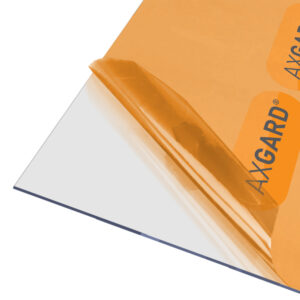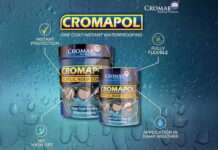Hybrid vigour refers to when an offspring between two breeds of plant or animal gets the strongest aspects of both of its parents. In the same way, you can give your windows the attributes of both glass and polycarbonate by using polycarbonate sheets as secondary glazing on the outside.
Benefits of Polycarbonate Sheets for Windows
Polycarbonate is exceptionally strong for its weight – 200 times more durable than glass. This is fantastic for reinforcing your windows against vandals or stray cricket balls. Furthermore, it can make it an excellent choice for public buildings and other glazing that runs the risk of physical punishment, like bus shelters. It also has a superior insulation factor to glass. Not only will you benefit from double glazing, but since your outer layer is polycarbonate, you will actually be more insulated than just double-glass double glazing.
Installing Polycarbonate Sheets as Secondary Glazing
The Axgard and Sekosnap lines by Clear Amber are ideal for installing polycarbonate secondary glazing. A double glazed window using one layer of polycarbonate is actually equivalent in insulation terms to a triple glazed window using only glass. You can purchase polycarbonate sheeting in clear that resembles normal windows, as well as an opal tint for a frosted window appearance. You can also purchase a patterned design if you want to improve on privacy.
Sekosnap is made of a two-part frame. The panels slot into connectors that are themselves attached to fitted bottom clips. These bottom clips are screwed in, and then the connectors are fixed in with a push-snap-fit system. The design allows for the connectors to be removed for cleaning purposes or other reasons – such as reducing the level of insulation.
Even if you’re double-glazing particularly large windows, Sekosnap has connector sections that allow for multiple Axgard panels to be joined together over one larger window. Both Sekosnap bars and Axgard sheets can be cut to fit with a circular saw. Always remember to wear proper safety gear such as gloves and goggles when working with power saws.
Choosing the correct thickness
For most domestic applications 2mm and 3mm polycarbonate panels will be ideal. These are also the sizes that work with Sekosnap. Thinner polycarbonate is more flexible and cost effective, while thicker polycarbonate is more durable and provides greater insulation. If you use larger panels, such as 4mm polycarbonate sheets you will need to invest in larger glazing bars like ALUKAP.
How to clean polycarbonate windows
Polycarbonate has a vulnerability to scratching, but a few basic precautions will have it spick-and-span without any damage. The idea is to clean it without causing dirt to rub against the sheet and scratch it. You should use an anti-static detergent and a microfibre cloth. The detergent will reduce the amount of dirt buildup on the panels, while the microfibre cloth can catch tiny pieces of dirt and hide them between its fibres, instead of rubbing the panel with the dirt in between to scratch it.
Simply clean the polycarbonate gently with a small amount of the detergent, some warm water and the cloth. Make sure to always avoid using harsh chemicals which will leave dirt intact or which could damage the polycarbonate itself. Especially avoid benzene and acetone which will cause the polycarbonate to break down.








